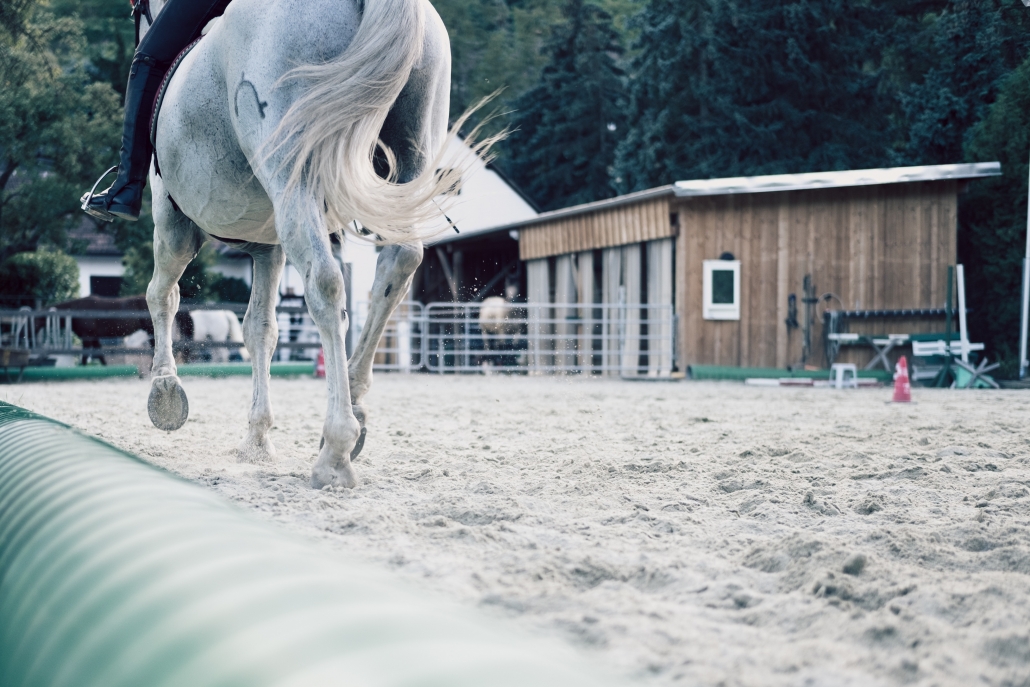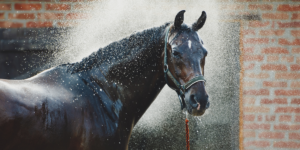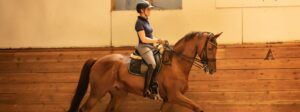Can I figure out myself why my horse is lame?
One of the members of Morgan Lashley’s online training wondered if she can do a lameness examination herself to figure out why her horse is lame. Morgan gave some insight in how she works as a veterinarian.
Unfortunately not one horse is the same as the other. On one side that’s a lot of fun, but on the other side it makes it really hard to create standard rules, for example in this situation.
There are a few rough rules you can follow when doing a lameness examination.
We veterinarians use these rules as well.
But remember, they aren’t 100% rules. It might be that your horse is an exception on the rule, they happen all the time. When in doubt, always consult your veterinarian.
What I as a veterinarian always do when I do a lameness examination, is to watch the horse in a straight line. I want to see the horse on a tough surface, in walk and in trot.
After that the horse has to go on a circle, again on a tough surface, also in walk and in trot and both left and right.
Often I let the horse turn an 8-shape while walking, to check the coordination of the horse.
Then I take a look at the horse on the circle again, but now with a soft surface. I want to see him walking, trotting and cantering, both sides.
”These rules are quite rough and don’t give 100% guarantee. When in doubt, always consult your veterinarian.”
What I also do during a lameness examination, is a flexion test on the legs, to see how the horse reacts on it.
During a flexion test you lift the leg and put pressure on the joint of the lower foot and the joint that lies above it for about a minute. The idea is that it might enable you to see a beginning problem lying underneath.
Because it might be that the horse isn’t lame on both the tough and soft surface, but still has a beginning problem within his joint.
Without the flexion test it’s possible that you would miss it.
When I do the flexion test and the horse reacts to it, I know that there’s a beginning problem.
As a veterinarian I mainly look for the differences between left and right and the front and hind legs.
Imagine that the horse doesn’t react to the flexion test of his left leg, but looks more lame on the right leg. That tells me that there might be a problem inside the leg that we don’t know about yet.
Of course it’s depending on the horse’s age how they react to the flexion test.
The older the horse, the more chance that there are already little changes within the joint, which would cause the horse to react.
But why do I let horses move on different surfaces during the lameness examination?
The different surfaces each have different goals.
On a tough surface there’s more being asked from the tissues that enable shock absorption. Think about tissues like the hoof itself, the mechanisms within the hoof and the cartilage.
You can also discover other hoof related issues and problems within the joints.
On a soft surface you can find out more about the tissues that are being stretched and deliver strength. For example the different tendons in the legs and the muscles in the body.
When you suspect that your horse has a bruise or hoof ulcer, he should theoretically be more lame on a tough surface than on a soft surface.
The reason that I let horses move on a circle, is because that enables me to be more precise about the exact spot of the pain.
Again, these are rough rules and don’t give 100% certainty.
But often, when the problem lies in the bottom part of the leg, the horse is more lame when that leg is on the inside of the circle.
So when your horse has an ulcer in his left hoof, he will be lamer when he’s going to the left than when he’s going to the right.
It’s the other way around when the problems are higher in the leg. They become more clear when that leg is on the outside.
But again, to really know if your horse is lame and why, you can best consult your veterinarian.
You can do the flexion test and let your horse move on a circle (especially with a tough surface) to determine for yourself if a visit from your veterinarian is really necessary.





